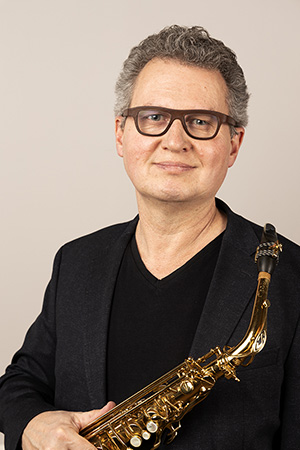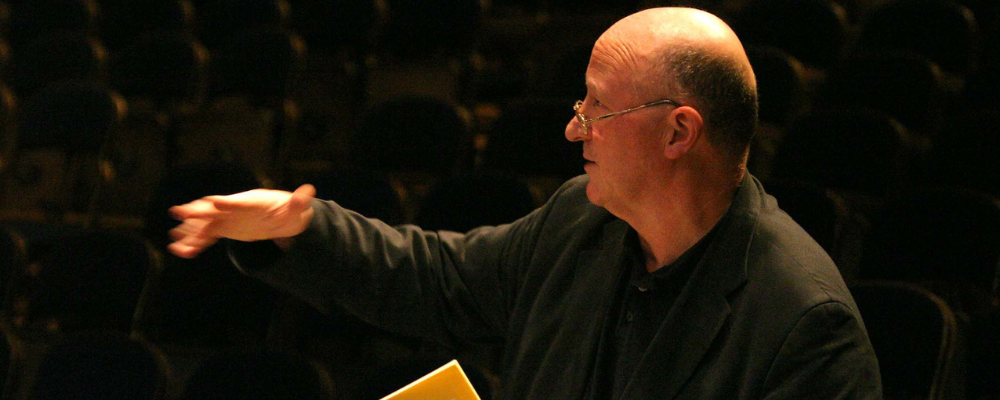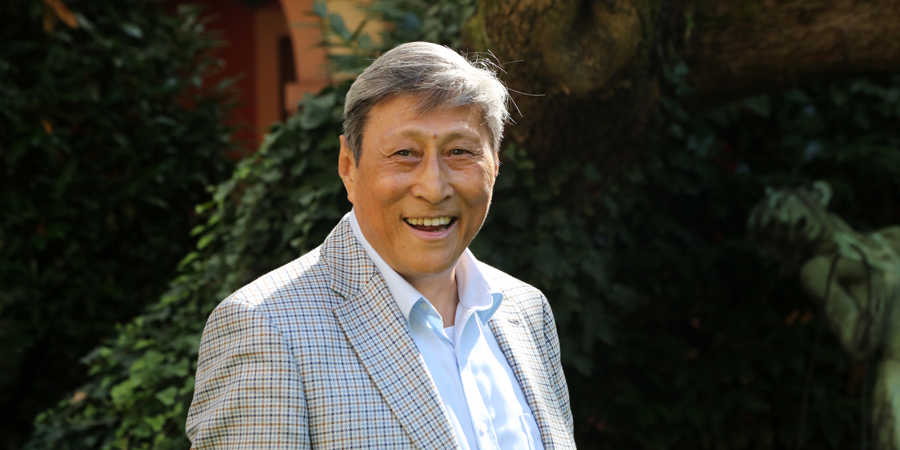Marcus Weiss presents new CD
- 20 Jan 2023

After the saxophone was invented a good 180 years ago, it enjoyed great success in certain musical styles. It has never found a regular place in the symphony orchestra, however. It is still seen as fairly new, and it has not been showered with solo works either - at least until recently. Marcus Weiss has now selected four very characteristic concert pieces from the last two decades that demonstrate a wide range of possibilities for the instrument.
 Marcus Weiss (Copyright: Christopher Boesch)
Marcus Weiss (Copyright: Christopher Boesch)
Interview
Mr. Weiss, you are one of the most successful classical saxophonists. What was crucial to your success?
For a "classical" saxophonist, the mere opportunity to play in public is a success. More than 30 years ago, I began to play new music intensely with my two ensembles, the Trio Accanto and the saxophone ensemble XASAX, and, above all, to work together with composers. This was actually the only possibility to perform with "classical" saxophone. The classical repertoire itself consists of only a few works, for example by Debussy, Glazunov or Ibert, which can be performed in normal programmes with orchestra. Most of the rest of the repertoire is pure "conservatoire" repertoire, neoclassical or neo-Romantic pieces that are of educational quality, if one may say so. So, speaking of success in my case, this is because 30 years ago there was almost no one else doing this. Today, there are very good and successful colleagues who perform with our little classical and, above all, even transcribed repertoire, and, of course, many more successful saxophonists in new music.
How did you get into playing the saxophone?
I don't remember exactly how. I remember that, when I was nine years old, I wanted to play the saxophone at the instrument selection afternoon at the music school, I even wanted to become a saxophone professor. But then I had to play the clarinet, because "you should start with a real instrument". There were simply no trained saxophone teachers yet! At the age of 15, I switched to the saxophone, but at first, I mainly played jazz and improvised.
What made you choose the pieces that can be heard on the CD?
I like the disparity and also the clear style of each of these pieces. The main idea was to gather different saxophones and very different aesthetic perspectives. Since there are almost no CDs like this, it was also important to me to present the range of the saxophone. Interestingly, the alto saxophone, the main instrument in history, is not represented at all. It was Debussy, d'Indy, Martin, Glazunov, Ibert, etc. who all wrote their concertos for alto saxophone.
 |
Contemporary Concertos for SaxophoneMarcus Weiss is one of the most successful saxophone players of this decade. Many concertos have already been written for him. The CD contains pieces from various genres, showing how well the sound of the saxophone can blend with an ensemble or orchestra.
|
Peter Eötvös composed the saxophone concerto "Focus" especially for you. How did that come about?
We had dealings with each other a few years ago and I asked him if he could write a saxophone concerto for my milestone birthday. He spontaneously said yes, that would be a "lovely idea". And, of course, I am happy and honoured to actually have received the piece. Working on it with Peter was wonderful. It was all about music, about the precise notation of articulation, dynamics, tempos, etc., but not in a somehow abstract way according to a plan, but always with the highest precision in the broad musical context.
What is the most challenging piece on this CD for you?
Each of the works has different challenges, tonal, dynamic or simply musical ones. The Haas concerto, however, is the most difficult in purely physical terms and also in terms of playing technique. On the one hand, there is the idea of a juxtaposition of saxophone multiphonics and orchestra in the second part of the piece. In other words, I play extended, powerful multiphonics, the orchestra responds in each case with a reproduction, a kind of copy of it. Both play fortissimo, but a single instrument, even if it's a loud saxophone, is rather lost compared to a large orchestra. The other challenge is the microtonal playing at the beginning of the piece. It’s not that microtones are not possible for saxophones. But the composer writes them in a register that is almost two octaves above the normal register, and in pianissimo to boot!
What is, in your opinion, the difference between a jazz saxophonist and a classical saxophonist?
It's exactly the same difference as between a jazz singer and a classical singer or a jazz pianist and a classical one. It is not because our instrument is the jazz instrument par excellence that there is a closer connection. I know many "classical saxophonists" who don't play a single note of jazz. Personally, I think that’s a pity, but the attitude towards the music, towards the sound and many other things are simply completely different. With the saxophone, the mouthpieces and the embouchure as well as the tonal concept are also very different. Although I don't get to play jazz very often anymore, I'm convinced that this experience and especially the experience of improvising is just as important for my music-making and for my listening as the countless hours of practising scores.
You are a professor of saxophone and chamber music at the Musikhochschule Basel. What do you give your students to take away?
In Basel I teach saxophone, chamber music and also run the Master of Contemporary Music course together with Sarah Sun, Yaron Deutsch and Mike Svoboda. That's a lot of different tasks. With the saxophonists, it's important to me to introduce them to as much music as possible. On the one hand, of course, they have to work a lot with regard to instrumental techniques as well as to the sound. But the situation with the repertoire, which I mentioned above, is special for us saxophonists. There is no preconceived profile of a "classical saxophonist". Everyone has to work out his or her own profile. With the flute, clarinet, etc., there is a path into the orchestra, chamber music or even solo playing, on which one can build a whole career. To us, they are just marginal areas, and of course teaching is often the main occupation. Artistically, however, various paths have opened up in recent years that either lead fully into new music, into the creation of new repertoire, into ensemble playing or into chamber music. On the other hand, there are also a few saxophone soloists who play traditional, even transcribed, repertoire, or saxophone quartets, some of which do excellent work, also with music from earlier centuries.
As a teacher, I see it as my task to make the students aware of all these possibilities, idealistically speaking, to give them the means to educate themselves to become enlightened, interested and critical musicians. However, the reality of making money with the saxophone, with music, is not always easy.
Short biography
Marcus Weiss studied saxophone at the Musikhochschule Basel. In 1989 he won the Soloist Prize of the Swiss Tonkünstlerverein or Association Suisse des Musiciens (today: Sonart). As a soloist, he performs with many orchestras and ensembles. He is a member of the Trio Accanto and the saxophone ensemble Xasax/Paris.
Weiss is professor of saxophone and chamber music at the Musikhochschule Basel. He regularly holds master classes at European and American universities. He is also a lecturer at the Darmstadt Summer Courses for New Music and at impuls in Graz and is part of the programme group of the Rümlingen festival.





